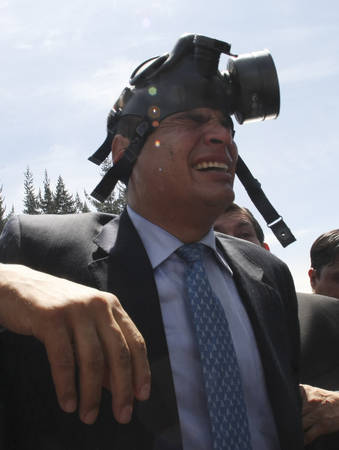A further difficulty for Ecuadorian nation-state development , and one that contributes to the country's identity politics, is the question of how to integrate the large indigenous populations into a unified national identity. The elites of Ecuador, s elsewhere in the new republics of South America,were essentially white people who claimed Spanish descent and who rejected any cultural alliances with indigenous populations.
In the 1970s Ecuador embarked on a national programto promote a unified concept of national identity and began a public compaign that defined national identity through the concept of the mestizo (mixed white and Indian). The idea of promoting a mestizaje identity was to subsume the social and cultural differences between races and ethnicities under a homogenized category that could include everyone.One of the hopes behind this public compaign was that by embracing a mestizo identity Ecuadorians could cast aside old barriers and work toward a more equitable society. Unfortunately, the cultural politics of the day resulted in little real change, and mestizaje really meant that the Indians would, or should, become more like “ whites” rather than whites becoming more like “Indians”.
In the 1990s, in a different global political landscape, Ecuador shifted its concept of national identity yet again, abandoning the “mestizo” label and its amplied homogenization and adopting a pluri-ethnic pposition in which cultural and racial diversity were to be celebrated .The government began a series of public initiatives, including changes in school curriculums, to educate the nation about Ecuador's rich ethnic diversity.
Despite the rhetoric, however, by all indications real ethnic integration has not occurred in Ecuador.
The 1990s economic crisis has caused millions to flee Ecuador importing with them their deep lasting inferiority complex.












Aucun commentaire:
Enregistrer un commentaire